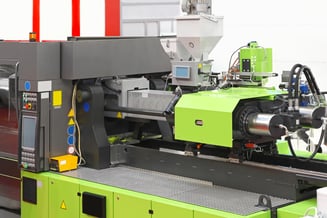If you’re unsure what injection molding is exactly, we’re here to help begin your education on the subject.
Injection molding, in a nutshell, is a manufacturing process used to make everything from car parts to cell phone cases to toys to plastic caps along with a myriad of other items we all use on an everyday basis.
A resin or liquid plastic is forced into a mold, then it cures and becomes the product. Sound simple? Well, that’s a fairly simple overview of a process that can be fairly complex.
But what exactly are the main points that go into the injection molding process? Take a look at this overview of the main factors of the process as your beginner’s guide to injection molding.
1) The Idea
The first step in the process of the design and engineering aspect is simply putting together the idea. The engineer will brainstorm, consider and debate many ideas as to how he will produce the best, most efficient mold that will create the part.

2) The Machine
Injection Molding Machines come in a variety of sizes. What determines these varieties are:
- How much tonnage they can apply to a mold to hold the mold together while forming the part. Tonnage is also determined by the projected surface area of the part.
- How much material they can hold in the barrel, which determines how large of a part the machine can produce.
3) The Mold
The term mold, sometimes referred to as a “die,” is simply the tool used to produce the part in molding. It’s what actually is built after the engineering and design phase to go into the injection-molding machine so a part can be produced. Molds can be constructed from hardened steel, pre-hardened steel, aluminum and copper alloy.
4) The Plastic/Resin
This is the most important material to an injection molder! It is very costly and has to be the right type, grade, and color for the part. There are hundreds of different plastics to choose from. The type of plastic/resin used depends on the part that is being produced.
Ultimately, the type of plastic/resin that is used is based on what the part will be used for. Also, because plastic is the largest raw material used it helps determine the profitability of the product to a company. It’s a resource that must be handled delicately and without waste because of the expense.
Designing parts can be a fairly complex job with many different factors in every application. However, it’s a process that begins to make sense the more you familiarize yourself with the different steps and what goes into each.
At Pleasant Precision, Inc., we love to educate and share our knowledge of injection molding and mold making. Follow us on Twitter and Like us on Facebook for daily discussions and articles to help you understand all aspects of what we do.
For any questions you might have, be sure to call us toll free at (800) 860-3974 or email to info@teamppi.com.
Are you looking for ways to do more with less?
Download our Guide: Modular Molds Contribute to Lean Manufacturing Success
- Shorten Time to Production
- Decrease Costs
- Compress Mold Change-over Times


